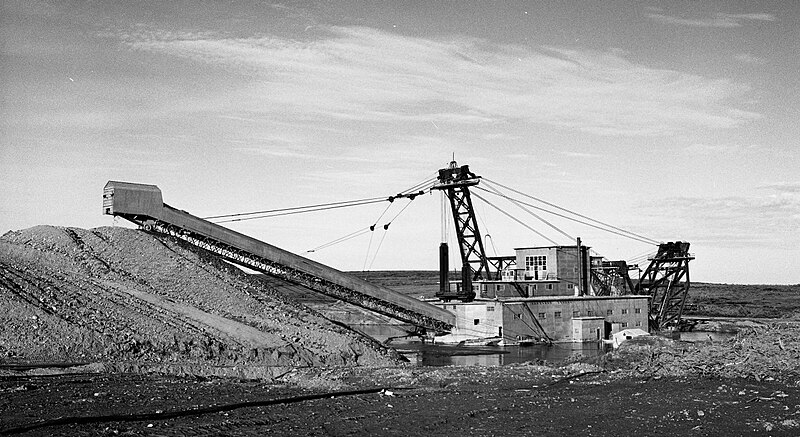Introduction to the Process:
Placer gold is gold that has been weathered from lode or hard rock deposits and usually concentrated in the sand & gravel found in stream beds. Other placer deposits are found in sand & gravel deposits found in arroyos in desert terrains, in this case gold is concentrated by wind action. Prospecting for gold in either of these terrains is strictly dependent on how much money the prospector can expend. Equipment needs can be as simple as a gold pan and shovel and can be upgraded to heavy equipment and seismic surveys to determine the depth to bedrock and the velocity of sound through the
unconsolidated soil. This is used sometimes to find abandoned river channels.
 |
| This is a placer mining dredge in action in Nome, Alaska in 1993 from the size of this dredge you can see that mining placer gold can quickly reach an industrial scale, |
The difference between mining and prospecting in placer deposits is only a matter of whether the operator is only taking samples in an area or stays in one locality for the recovery of gold or other values. Mining also involves the use of more equipment then a simple gold pan and more sophisticated equipment for processing more sand & gravel per hour. This can range from a simple sluice box capable of processing up to a cubic yard per hour to gold mining dredges capable of processing thousands of tons of sand & gravel per hour.
 |
| This illustrates the other extreme of gold panning for gold with a gold pan. |
Placer mining takes advantage of the specific gravity (SG) of gold that is 19 making gold 19 times as dense as water. Most of the mineral grains composing sand are around SG 3 and are easily washed away by running water or high wind leaving the gold behind. Most gold is found close to bedrock or on top of an impervious layer of clay,.

No comments:
Post a Comment